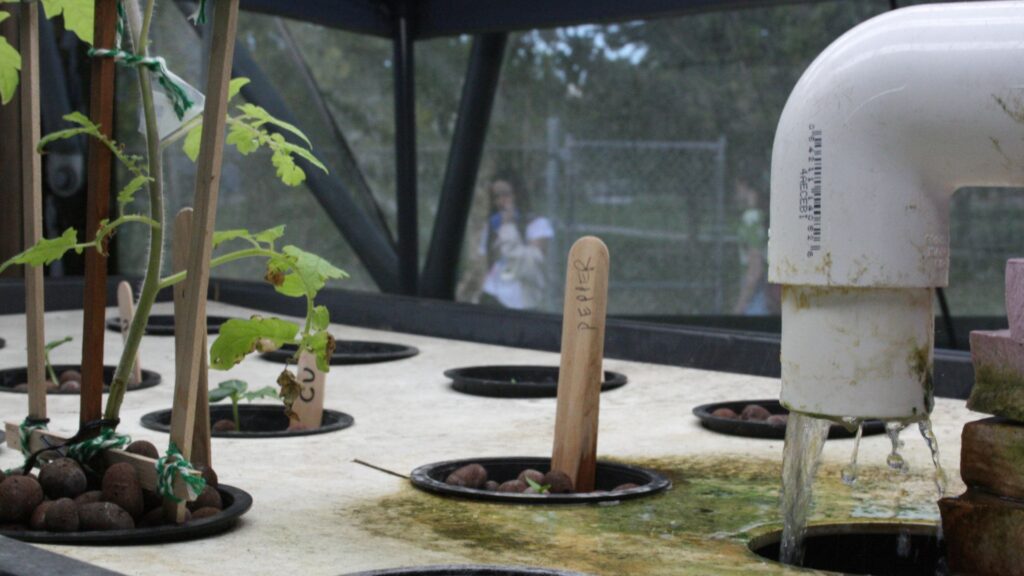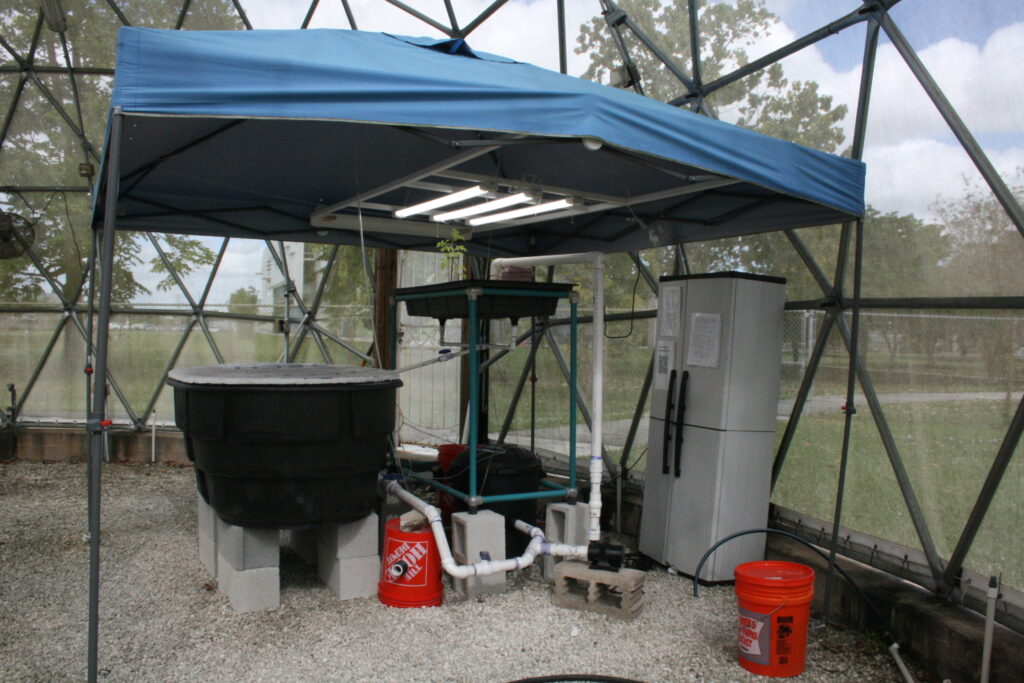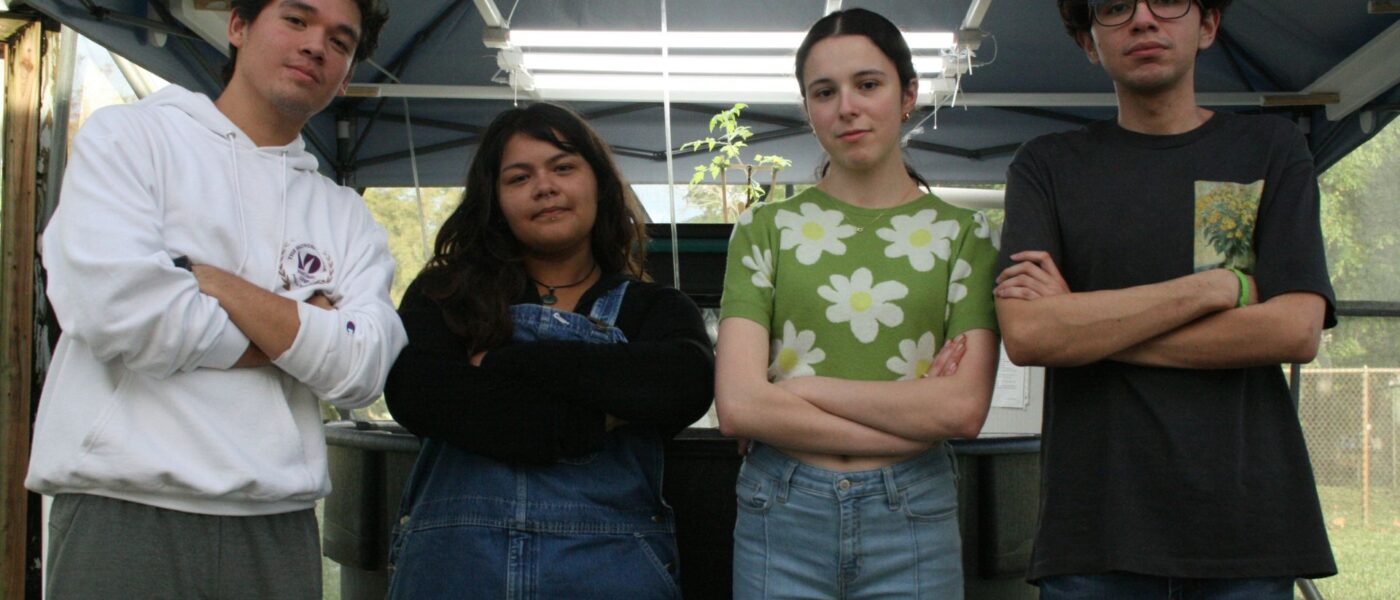Aquaponics Club Tackles Environmental Sustainability Issues
By 2025, half of the world’s population could be facing water scarcity.
So what does that mean for an agricultural industry that uses hundreds of gallons of water daily?
That was the question Alexa Bencomo and Jonathan Roa Clavelo, two former North Campus Honors College scholars, posed two years ago.
The duo approached Stephen Nesvacil, the program coordinator for the Earth Ethics Institute—an organization that promotes environmental sustainability—at North Campus, requesting information about aquaponics, an agriculture system that combines fish rearing, artificial light, the use of fish excrement and soilless plants to grow food.
That process uses nearly 90 percent less water.
Nesvacil, who knew there were several empty 500-gallon aquaponics tanks in the garden next to the Science Complex, suggested they start an aquaponics club.
“I was aware that some faculty members had purchased this equipment with the hopes of getting [an aquaponics system] running, but never did,”Nesvacil said.
Bencomo and Clavelo laid the foundation for the club, building the framework to create an on-campus aquaponics system.
This fall, four sophomores in the Honors College at North Campus made the official launch.
“Two years ago this was a concept,” said Juan Buitrago, the secretary of the aquaponics club. “Now we have an actual system that’s tangible.”
During its first year, the club encountered numerous roadblocks.
Students quickly realized the unused 500-gallon tanks and the industrial pumps were too large.
With guidance from Antwan Daniels, a lab manager at North Campus who has his own aquaponics system at home, and funding from the Earth’s Ethics Institute, smaller tanks were purchased and installed.
Last year, the system’s polyvinyl chloride pipes began to leak. However, this summer, students engineered a way to make them function again.
But the biggest setback occurred last spring when more than half of the 60 tilapia fingerlings died in a lab as they waited for the system to be capable of housing them.
Many fish got caught in a water filter, others were trapped under rocks and some ate each other. Only 20 of them survived.
“That was an eye-opening thing because…a lot of the tilapia didn’t make it; they became food for other tilapia and it was a competition tournament,” Nesvacil said.
Because the temperature was too high for the system to function properly this past summer, the team decided to wait for the fall semester when the air is cooler.
Today, the aquaponics system is in full swing.
Seven tilapia are stored in a 150-gallon, styrofoam-covered tank with a pump that guides the water with fish excrement through filtration stages.
Stage one involves a Home Depot bucket filled with sponges that trap the big sediments.
The second stage entails a bucket full of constantly moving bio balls that attract bacteria to the surface and away from the water.
After the filtration process has finished, the nitrogen-rich water is pumped up to soilless clay-pebble plant beds, which filter the water one last time as seedlings extract the nutritional benefit of the nitrogen.

Artificial lights on a 4×10 overhead rack mimic sunlight, allowing the plants to constantly photosynthesize.
The filtered water is ultimately pumped back into the fish tank. An air pump in the system helps oxygenate the water for the fish via slender plastic tubes, and another tube over the tank spouts water to break the surface tension and generate oxygen.
Then the entire system repeats itself.
Though the system operates on its own, constant maintenance is crucial.
The tilapia are fed fish pellets three to four times a week, though Daniels suggests their diet be changed to duckweed to avoid bloating. Additionally, the tank’s pH and water levels are checked almost daily.
“We can’t maintain a system without the people,” said Sofia Mangel, the club’s vice president. “So it’s very important that people get educated and we get student engagement.”
On Nov. 17, the club reached another milestone–seeds that germinated small roots on tissue paper were transplanted into the aquaponics system and are maturing. The plant beds currently have cucumber, pepper and tomato.
The aquaponics club hopes to expand its facility and supply the food pantry with the vegetables they produce.
They currently have 29 members. Meetings are held on Fridays at 10 a.m. in the white dome next to the garden and the Science Complex, but the facility is open throughout the week until 5 p.m.
“We’re progressing, making new advancements and that’s something I’m really proud of,” said Roland Tello, the club’s treasurer.
Students interested in joining or volunteering can visit the club’s sharknet.
Click here to subscribe to our bi-weekly newsletter, The Hammerhead. For news tips, contact us at mdc.thereporter@gmail.com.


